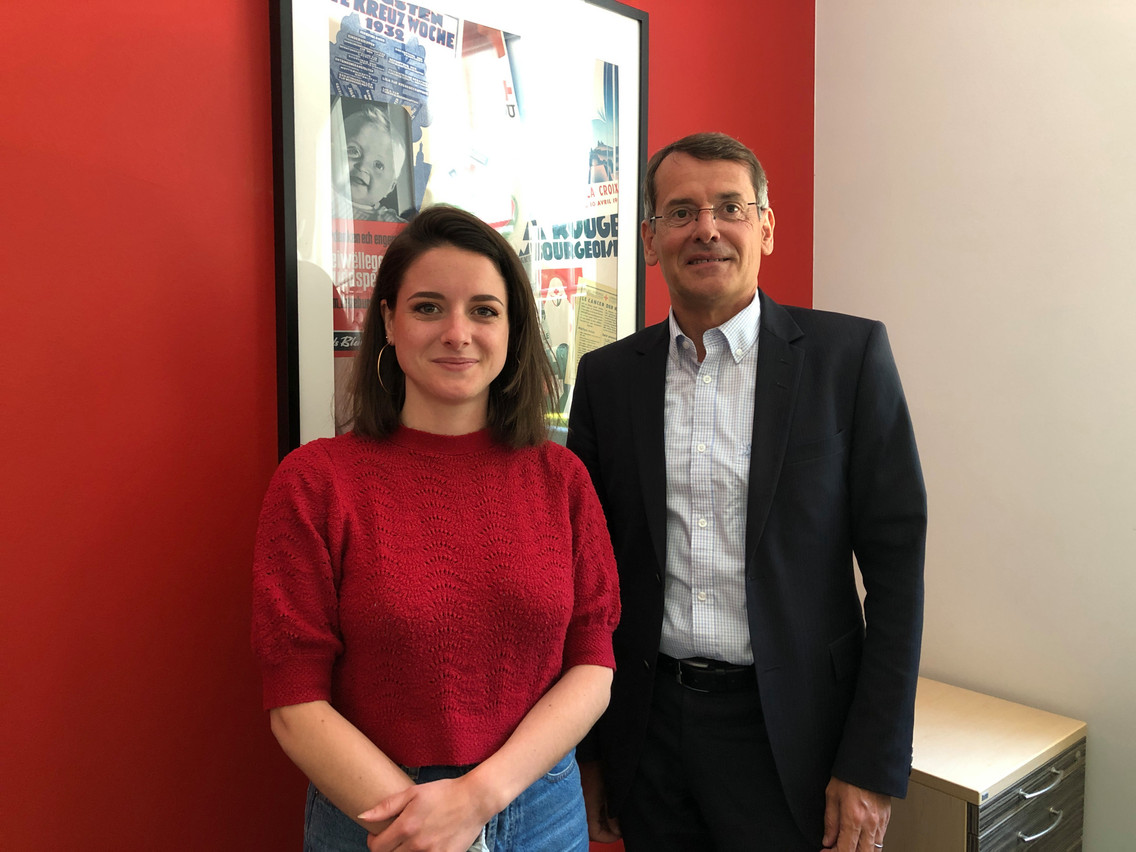Red Cross Luxembourg director and project manager Cécile Rumeau discuss the strategy, why it was necessary to develop it and how it will help the NGO move forward.
Mathilde Obert: Why define a strategy today?
Michel Simonis: Some people say that there is no point, because when the time comes, you are faced with challenges that are not going to be those you imagined. But agility is also a strategic decision. Today, after the exercise we have done, we are convinced that it is a good thing.
Didn’t you have a strategy before?
MS: There was a reflection in 2013. The feedback we received was mainly about how to do better the work we were already doing. But there was little ambition related to the business itself.
How does your new strategy differ?
MS: We asked the same question: what things would we like to change in the coming years? But we have given people directions, asking them to specify these things in terms of the businesses. We end up with ambitions linked to trade, but inspired by cross-cutting thinking.
For example, if we think about health, it’s not just the hospital, but more broadly. The same goes for housing, which concerns migrants and the homeless but also elderly people who would perhaps like to meet young people who could help them in shared accommodation.
But there are still challenges in terms of the support that a Red Cross organisation should give to the various services: digitalisation, an HR strategy to acquire and support people.
What will the Luxembourg Red Cross look like in 2030?
MS: An organisation that knows how to respond to the challenges of the moment. This is something we are already doing today, but I believe we can do it better, in a more organised way and perhaps in a more natural way, because that is what we are meant to do.
In concrete terms, how do you incorporate these crises that you don’t yet know about into your strategy?
Cécile Rumeau: One example is to set up a local intervention group. These are volunteers trained in advance who can be mobilised at any time to intervene rapidly.
MS: You really have to work across the board, break down the silos, it’s a daily job.
What lessons have the pandemic and the war in Ukraine taught us about anticipating crises?
MS: The care homes were at one point affected by lockdown. Other areas, such as care, were in need of staff. We were able to reallocate our resources to meet this need. This is something that, if well organised, can have even more potential to respond to crises.
How do you establish such a strategy?
CR: It took two years, with a six-month covid-19 break. The first step was to gather as much information as possible from the field. We did workshops, interviews and surveys. At least 200 people were involved. Mostly managers, but you have to remember that they are on the ground and are representative. We also included volunteers and some employees.
The second step was prioritisation. We came up with the first six axes, focused on responses to the direct needs of beneficiaries: international, health, youth, volunteering, crisis and housing. Then we added the six axes a little more support.
MS: Our governance was responsive to the field. Many staff members raised the issue of environmental responsibility, even though one might think that the Red Cross does not have a vocation to protect nature. But for them, in the deployment of its actions, it should pay more attention to the carbon footprint.
On other points, we see the signature of governance, which makes it clear that our agility does not come from funding ministries and that we have to go to our donors to maintain it.
Among the 12 axes is the regrouping of the teams within the Red Cross House planned for 2025 in Howald. Will the shortage of raw materials delay its completion?
MS: We have entrusted the project to a developer who will now go into the tender phase, they have an obligation to deliver the building by a contractually agreed date.
What about the budget?
MS: The budget is contractually fixed. Afterwards, there are the interior fittings. This is indeed a risk on our side. It remains an ambitious project, but, as far as the risks are concerned, we have contractually limited them so that we have every chance of it going ahead.
This story was first published in French on . It has been translated and edited for Delano.
